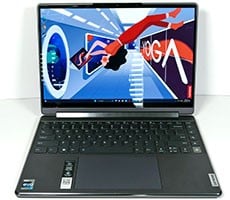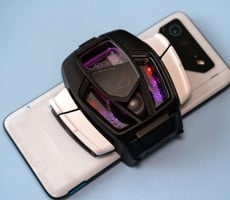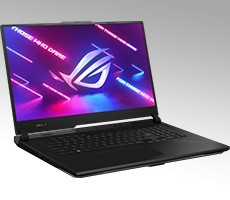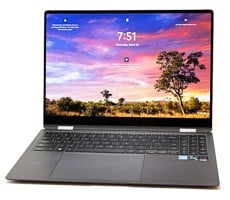Razer Blade 17 Review: A Slim RTX 3080 Ti Mobile Gaming Weapon
The Razer Blade 17 has an additional wrinkle in that it gives users the ability to configure the discrete GPU to operate in a hybrid mode (NVIDIA Optimus), which switches between the Core i7-12800H's integrated Iris Xe iGPU and the GeForce RTX 3080 Ti dGPU depending on the workload, or in an always-on mode that keeps the GeForce powered up and directly connected to the display to provide the best performance. All of our benchmarks were run with the always-on discrete graphics mode enabled, except for our battery life tests where we evaluated both modes.
ATTO Disk Benchmark
The ATTO disk benchmark is a fairly quick and simple test which measures read/write bandwidth and IOPS across a range of different data sizes. While we don't typically compare these results across multiple machines, it's useful to gauge whether a particular notebook's storage subsystem is up to snuff.Speedometer 2.0 Browser Benchmark
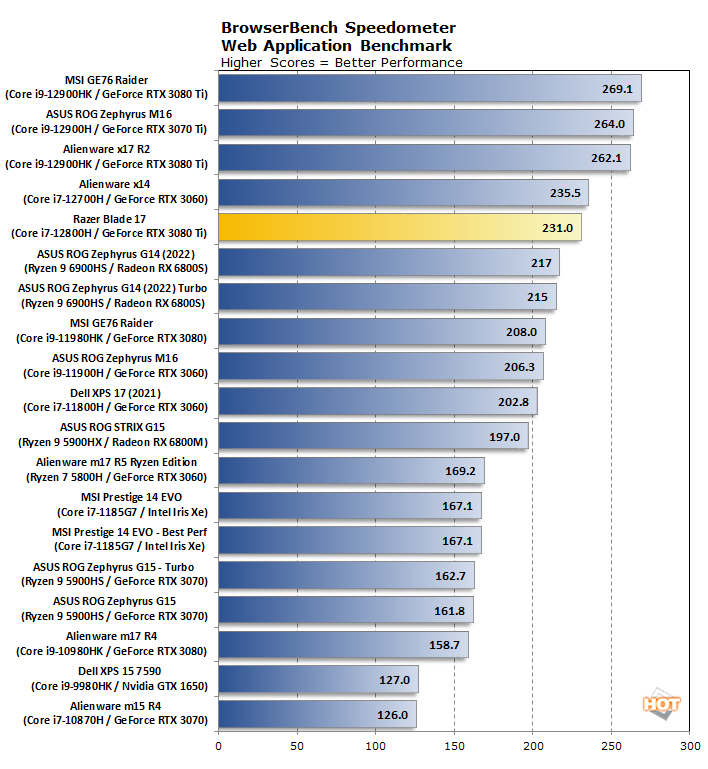
The Razer Blade 17 with its Core i7-12800H lands in the upper quadrant, clearly outrunning all of the AMD-powered rigs, but it can't quite catch the top-end Alder Lake systems, which have higher boost clocks. We also suspect Razer tuned the power profile on this system to favor the GPU, which will become clear in a just a bit.
Cinebench R23 Rendering Benchmark
This is the latest 3D rendering benchmark from Maxon, based on the Cinema 4D R23 rendering engine. We tested both single-threaded and multi-threaded tests on all of the notebooks represented here...
Once again, the Razer Blade 17 lands in the upper echelon, but it actually trailed the Alienware x14, which technically has a "lower end" Core i7-12700H processor (The same was true in Speedometer above). Performance is still very good, but this is a trend we saw throughout our testing.
Geekbench 5 Benchmarks
Geekbench is a cross-platform benchmark that simulates real world processing workloads in image processing and particle physics scenarios. We tested the notebooks featured here in Geekbench's single and multi-core workloads. It measures single-threaded performance allowing a single core to stretch its legs, and multi-threaded throughput to put all cores under a heavy load.
The Razer Blade 17 once again finishes in the upper quadrant with Geekbench, trailing the Core i9 systems, but outgunning the Ryzen-based rigs.
PCMark 10 Whole System Benchmarks
PCMark 10 uses a mix of real-world applications and simulated workloads to establish how well a given system performs productivity tasks, including image and video editing, web browsing, and OpenOffice document editing. While these scores appear to be all over the place, the systems are sorted by their overall PCMark score, which is the third (gray) bar in each cluster.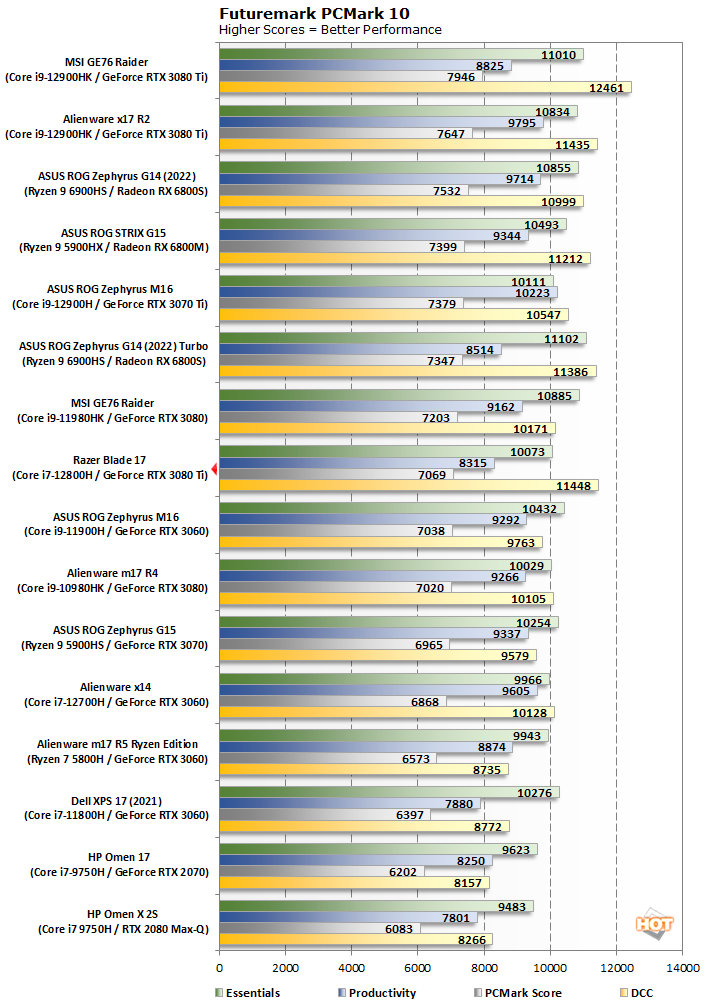
3DMark Graphics And GPU Tests
3DMark has several different graphics tests which focus on different types of systems. We start with Time Spy, which is 3DMark's headline benchmark. This test presents a pretty significant challenge for the system's CPU and GPU using DirectX 12's API...
The Razer Blade 17 put up the best Time Spy score of the bunch and even managed to outrun the MSI GE76 Raider and Alienware x17, despite both systems having higher-end processors and higher rated GPU boost clocks. We suspect Razer's power profile favors the GPU in the Razer Blade 17 and the system's elaborate cooling hardware allows the GPU to operate at a higher average frequency throughout the benchmark run.
Next up, let's take a look at the Extreme preset for the punishing 3DMark Fire Strike test. This DirectX 11 test has been around for a while, but it's still pretty challenging.
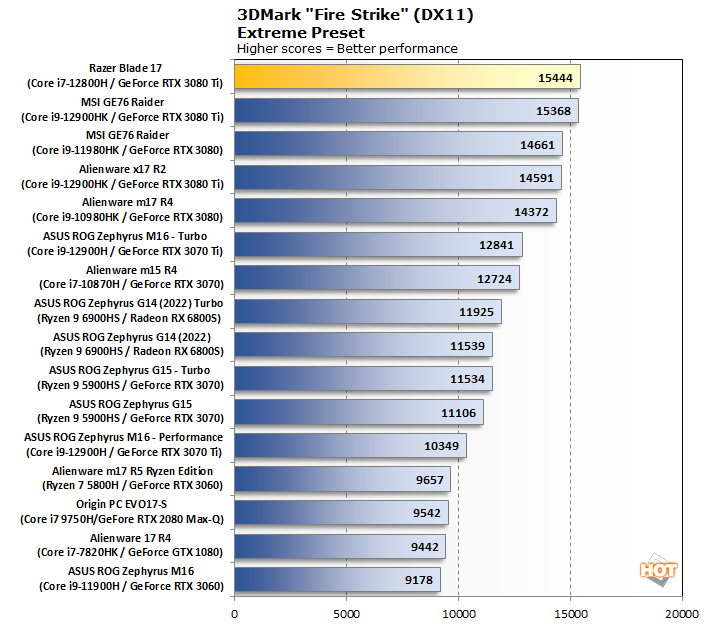
We saw more of the same in Fire Strike. The Razer Blade 17 is once again able to top the charts and outpace all of the other gaming notebooks we've tested.
Lastly, the Port Royal test uses DirectX Ray Tracing (DXR) to illuminate a scene...

DXR hardware is a requirement for this test, so we don't have quite as many machines represented. Still, the Razer Blade 17 puts up the best score of the bunch, albeit by the tiniest of margins.
Middle Earth: Shadow Of War Tests
Middle Earth: Shadow of War is a fun and and beautiful title set in Tolkien's Lord of the Rings universe. To test the game's performance relative to other systems, we set the resolution to 1920x1080 and turned the visuals up to the High preset. The frame rates here are the average reported by the built-in benchmark.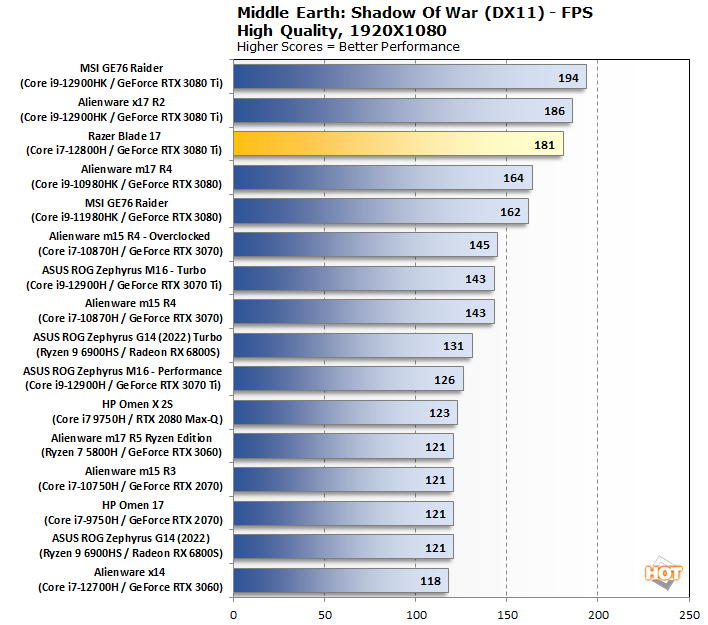
Shadow Of The Tomb Raider Benchmarks
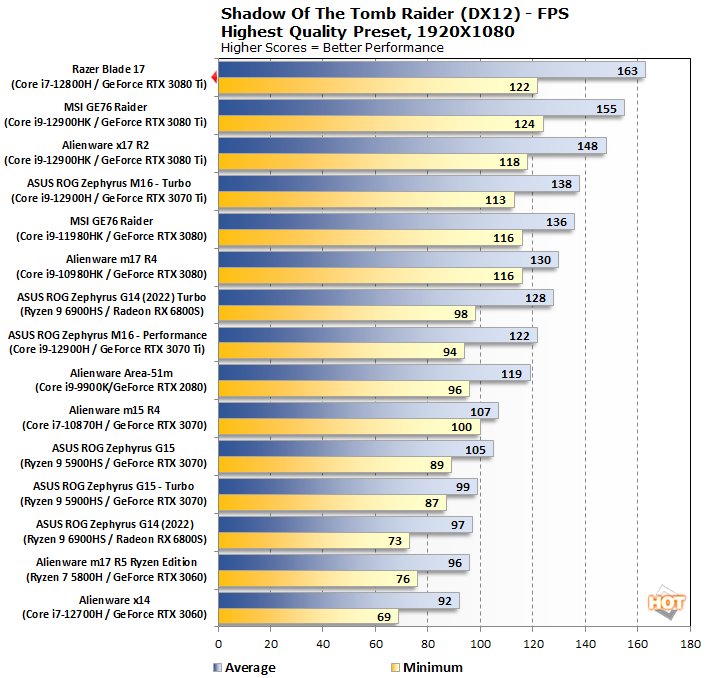
The Razer Blade 17 returned to its winning ways in Tomb Raider. The system put up the best average and second best minimum framerate of the bunch. At 1440p, the Razer Blade 17 was still able to achieve a triple digit frame rate of 113 FPS.
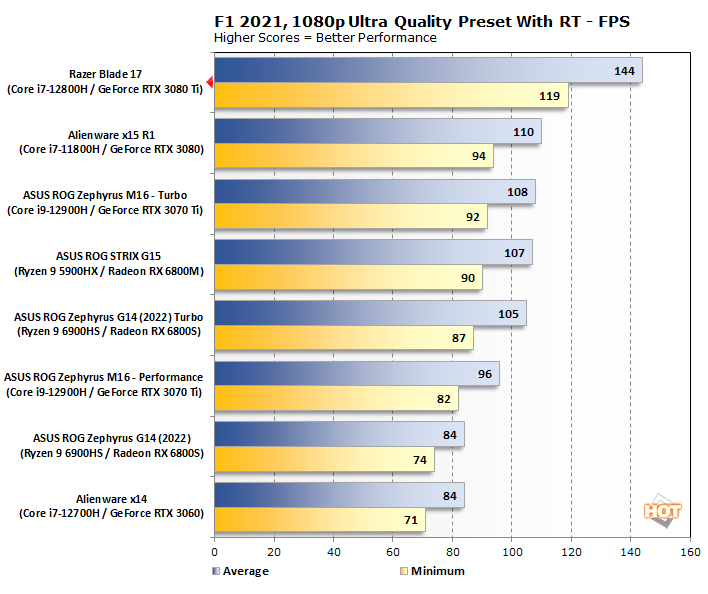
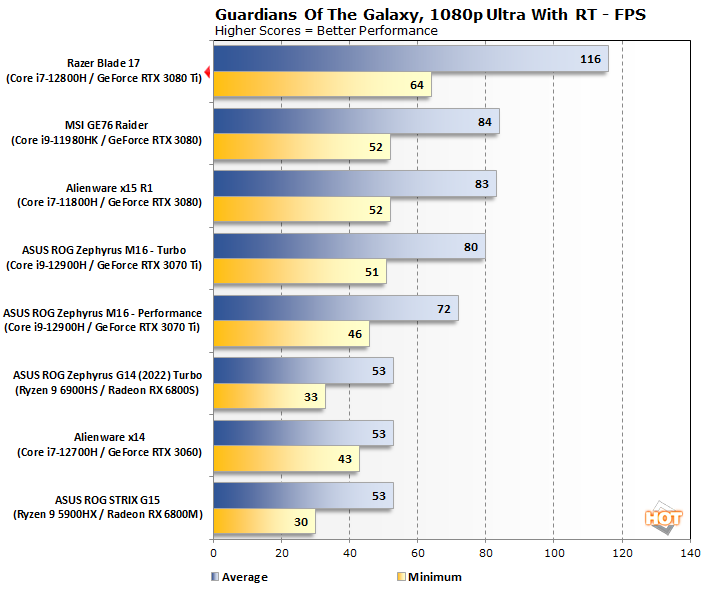
Battery Life And Power Tests
We run a custom 1080p HD video loop test developed in-house, to prove out battery life with our test group of machines. In all tests, Windows Quiet Hours / Focus Assist has been enabled and the displays are calibrated with lux meters on pure white screens to as close to 115 lux as possible. For the average laptop this is somewhere between a 40-60 percent brightness setting.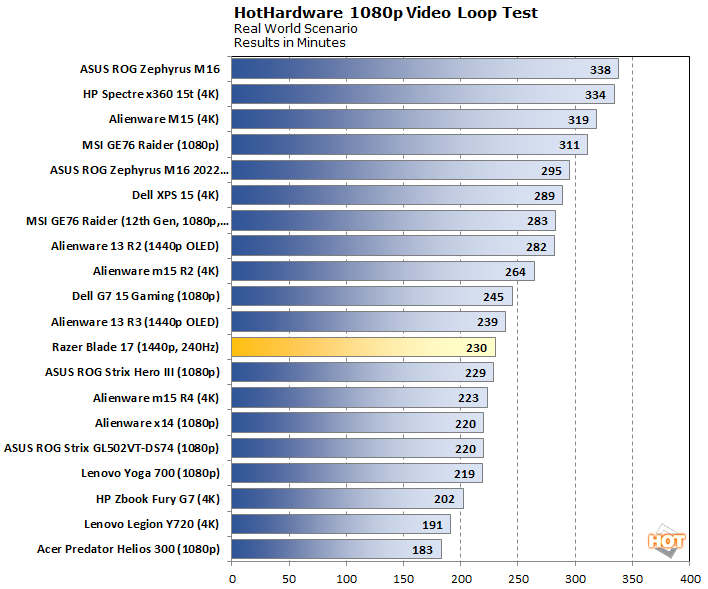

When everything is spun up and the Razer Blade 17's CPU and GPU are getting hit with a heavy-duty graphics / gaming workload, battery life is very shot. With hybrid graphics enabled, we couldn't quite hit the 1 hour mark. And in its highest performance mode, the Razer Blade 17 only offered 46 minute of uptime on battery. That was enough to outrun the Alienware x17 R2, but its not a particularly strong showing. That said, powerful gaming notebooks aren't geared for maximum battery life, so this is par for the course.

